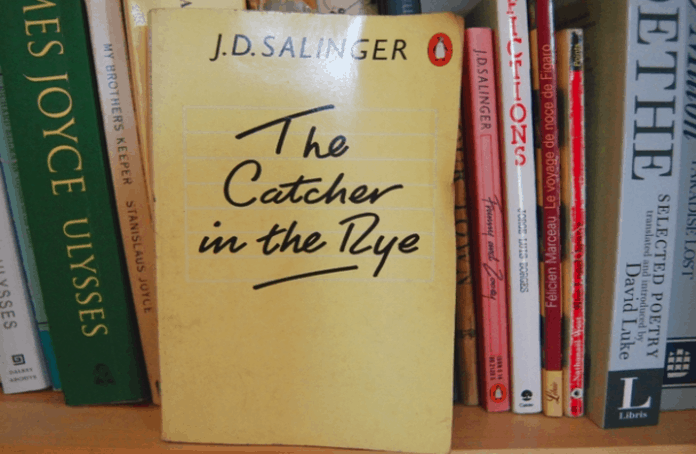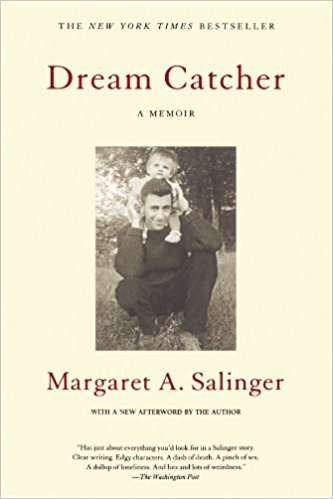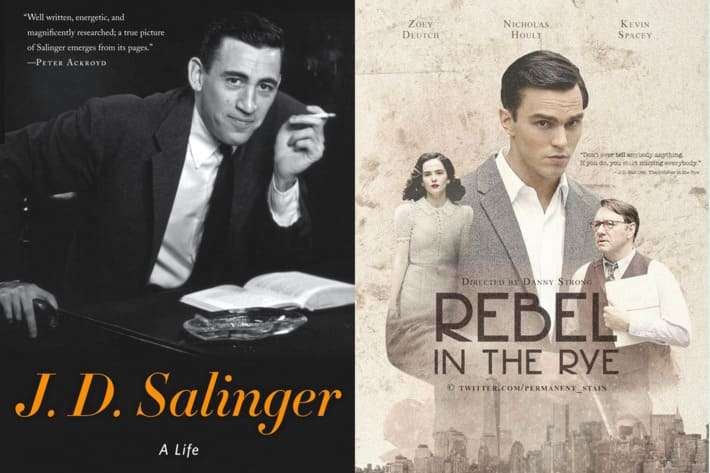J.D. Salinger has been in the spotlight in recent weeks – something the famously reclusive author would probably have hated. But between the September biopic, Rebel in the Rye, and a recent New York Times article about possible new books from the author, he’s getting more attention than ever. It begs the question: how would Salinger feel about all of this renewed interest in his life and art?
 About a week ago, The New York Times ran an article titled, “So Where Are the New J.D. Salinger Books We Were Promised?” In it, they wonder at the presence of new work by the author, who, according to several sources, kept writing long after his final authorized publication in 1965. A 2013 documentary, Salinger, posits that the author not only wrote more books in his later years, but that he left detailed instructions on when they were supposed to be published: between the years of 2015-2020. But 2015 is long behind us and 2018 is just around the corner. No one has seen any new work from the author, leaving everyone to wonder if the claim has any real validity.
About a week ago, The New York Times ran an article titled, “So Where Are the New J.D. Salinger Books We Were Promised?” In it, they wonder at the presence of new work by the author, who, according to several sources, kept writing long after his final authorized publication in 1965. A 2013 documentary, Salinger, posits that the author not only wrote more books in his later years, but that he left detailed instructions on when they were supposed to be published: between the years of 2015-2020. But 2015 is long behind us and 2018 is just around the corner. No one has seen any new work from the author, leaving everyone to wonder if the claim has any real validity.
NYT reached out to Salinger’s son, Matthew Salinger, who helps run the J.D. Salinger Literary Trust. “Yeah, what came of those?” he told the paper. And also, “I would consider the source.” But Salinger refused to say whether or not new books are coming, and the filmmakers behind the documentary – David Shields and Shane Salerno – stand by their claim. Their assertion matches up with what Margaret Salinger (J.D. Salinger’s daughter) noted in her memoir, Dream Catcher, published in 2000. She writes that her father had a clear system regarding his work: “A red mark meant, if I die before I finish my work, publish this ‘as is,’ blue meant publish but edit first, and so on.”
and the filmmakers behind the documentary – David Shields and Shane Salerno – stand by their claim. Their assertion matches up with what Margaret Salinger (J.D. Salinger’s daughter) noted in her memoir, Dream Catcher, published in 2000. She writes that her father had a clear system regarding his work: “A red mark meant, if I die before I finish my work, publish this ‘as is,’ blue meant publish but edit first, and so on.”
It sounds hard to believe that an author who refused to publish in his later years would be so adamant about his work coming out at any point, even after his death in 2010. But it’s always complicated when it comes to work published posthumously, or even when a famous author is aging and may not have the capacity to guard their privacy. It reminds us of another famously reluctant author who published a book late in life: Harper Lee, and Go Set a Watchman.
The sequel to Lee’s beloved 1960 classic To Kill a Mockingbird came out in 2015 and was almost instantly panned by critics. But then a darker story emerged on several news outlets, questioning if the 89-year-old Lee, who was living in a nursing home following a stroke, even would have wanted the book to be published in the first place.  The fact that Lee’s health was declining, and that her sister and caretaker had recently passed, led many to believe that she had been manipulated into publishing the “lost” manuscript. Since then, it has basically been confirmed that Go Set a Watchman wasn’t actually a sequel at all – it was a first draft of To Kill a Mockingbird, which was later edited into the literary masterpiece we know and love.
The fact that Lee’s health was declining, and that her sister and caretaker had recently passed, led many to believe that she had been manipulated into publishing the “lost” manuscript. Since then, it has basically been confirmed that Go Set a Watchman wasn’t actually a sequel at all – it was a first draft of To Kill a Mockingbird, which was later edited into the literary masterpiece we know and love.
Throughout her life Lee publicly stated that she would never publish again. So would she have changed her mind so late in life with a book that was always intended to be an early draft? It seems doubtful. Since she passed away in February of 2016, there’s no way to determine if publishing Go Set a Watchman was truly her choice. (Though she did apparently tell her publisher that she was “happy as hell” with the reactions to the novel.) But the controversy also raises questions about Salinger, and what the notoriously private author would have wanted to occur with his work after his death. Though he eschewed publishing, it is pretty clear that he did keep writing throughout his lifetime. According to the documentary, there are 5 new works slated to be published. One is a novel set in WWII, one is a collection of short stories called The Family Glass, and another would include stories about the Caulfields, a further exploration of Holden Caulfield’s family from The Catcher in the Rye.
Salinger’s last published work was a novella, which ran in the New Yorker in 1965,  titled, “Hapworth 16, 1924.” After that, he only agreed to publish one other time – an aborted attempt at rereleasing “Hapworth” as a standalone novella in 1996. Even then, Salinger would only work with a small press and made a series of demands (including that his name not be on the cover). But when the public caught on and media attention turned to the author, he pulled the deal.
titled, “Hapworth 16, 1924.” After that, he only agreed to publish one other time – an aborted attempt at rereleasing “Hapworth” as a standalone novella in 1996. Even then, Salinger would only work with a small press and made a series of demands (including that his name not be on the cover). But when the public caught on and media attention turned to the author, he pulled the deal.
It’s difficult to imagine a world where either Salinger or Lee would have been comfortable publishing work again at any point in their lives (or their deaths), though we suppose stranger things have happened. In the case of Lee and Watchman, the die has already been cast. But until we actually see a new Salinger book on the shelves, there’s no proof that the author had a grand publishing plan that would carry on his legacy after death. It’s almost 2018, which leaves about two years for the documentary’s claim to come true. At this point, we’ll just have to wait and see.




